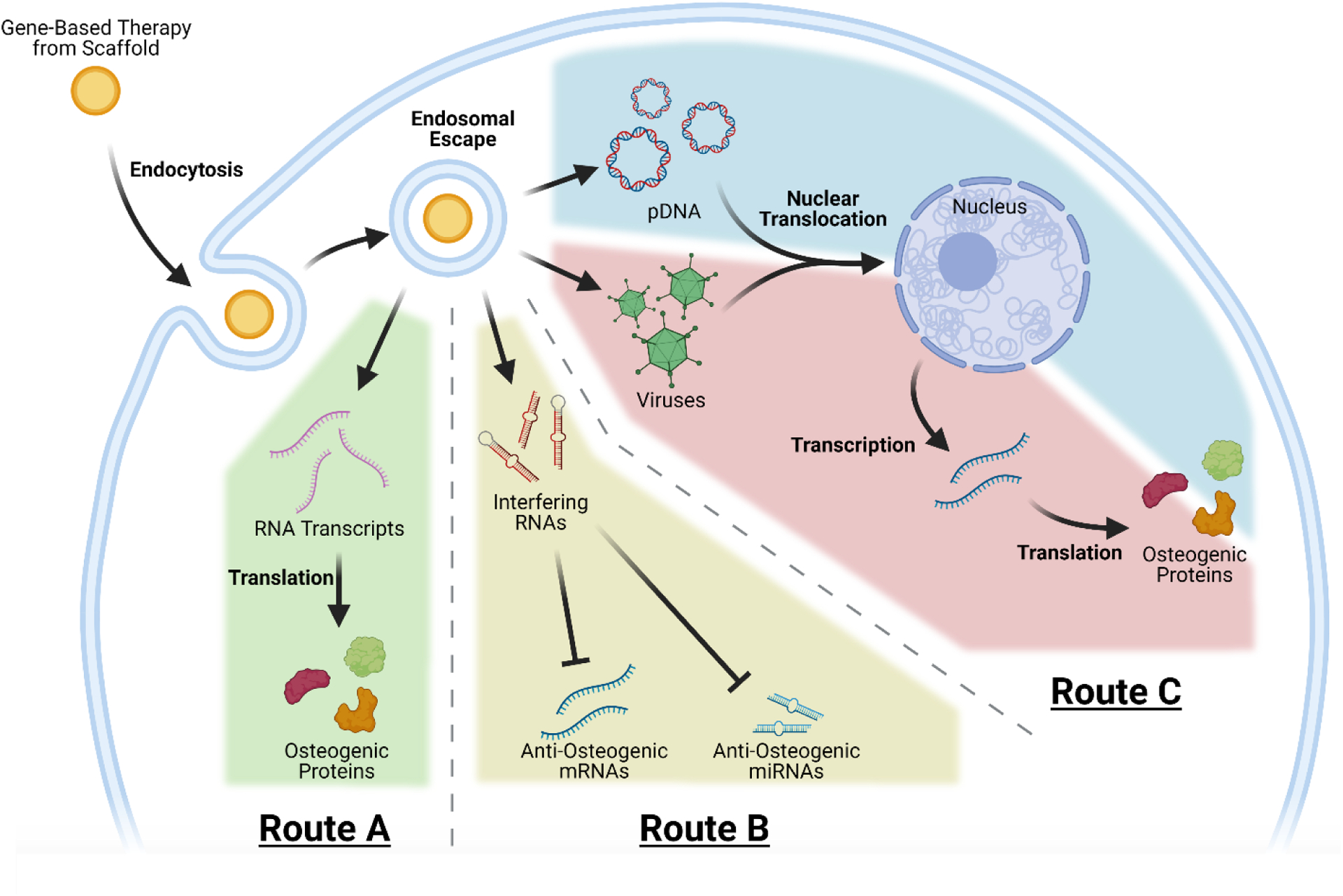Figure 3:

Schematic diagram illustrating the mechanisms of transfection from scaffolds activated with pDNA, viruses, interfering RNAs, and RNA transcripts. RNA transcripts have the simplest transfection mechanism (Route A), where they can be translated into osteogenic protein immediately after entering the cytosol. Interfering RNAs follow a different transfection mechanism (Route B), where after entering the cytosol they can inhibit the anti-osteogenic activity of targeted mRNAs and miRNAs. Viruses commonly used in gene-based therapy and pDNA follow similar routes within the cell (Route C), where after endosomal escape they must reach the nucleus. After entering the nucleus, the encoded genes can be transcribed into mRNA that is then translated into osteogenic protein.
